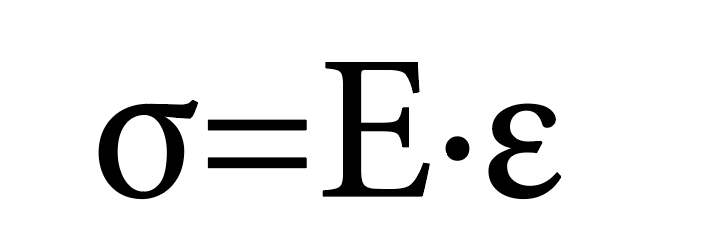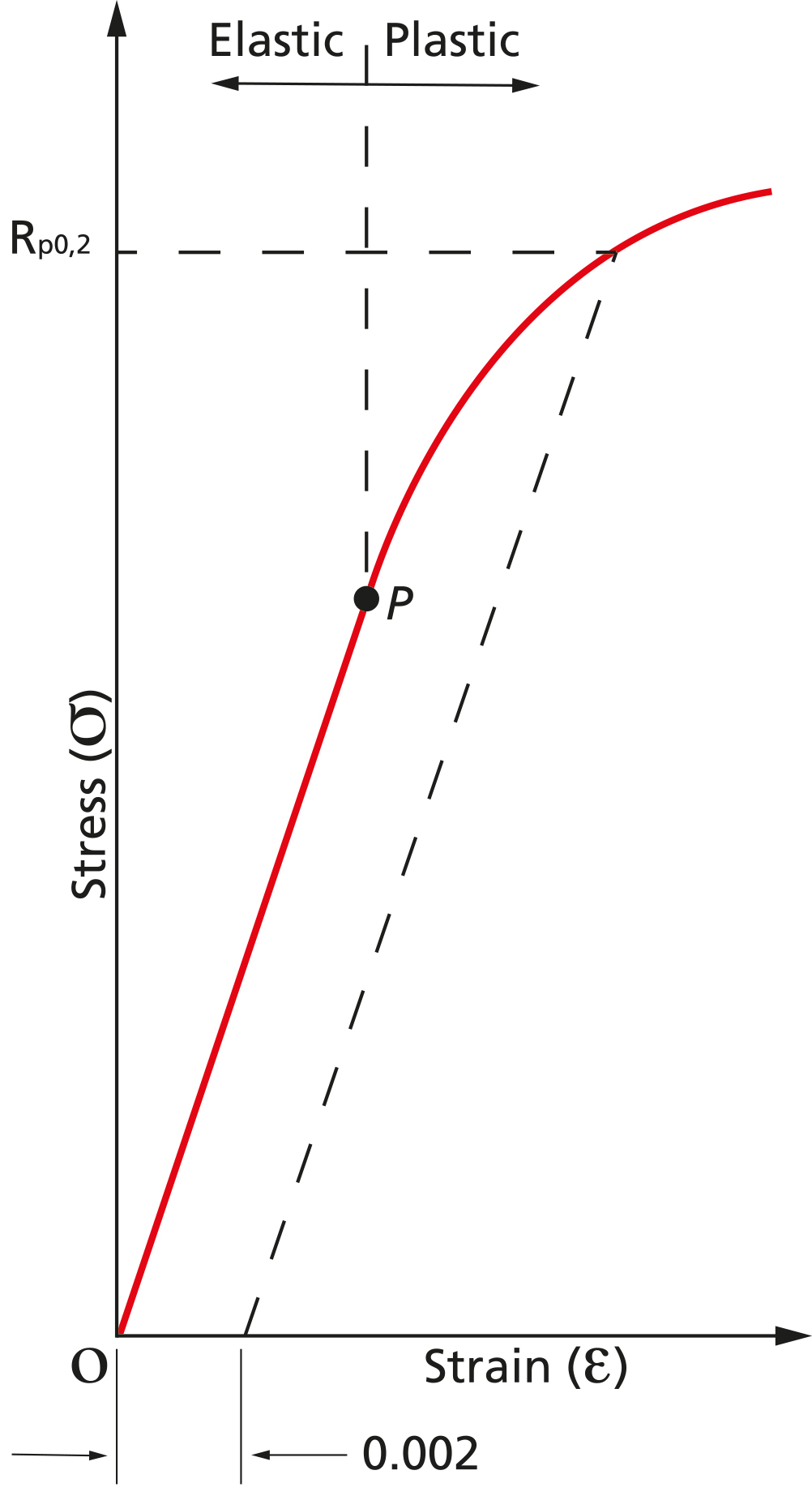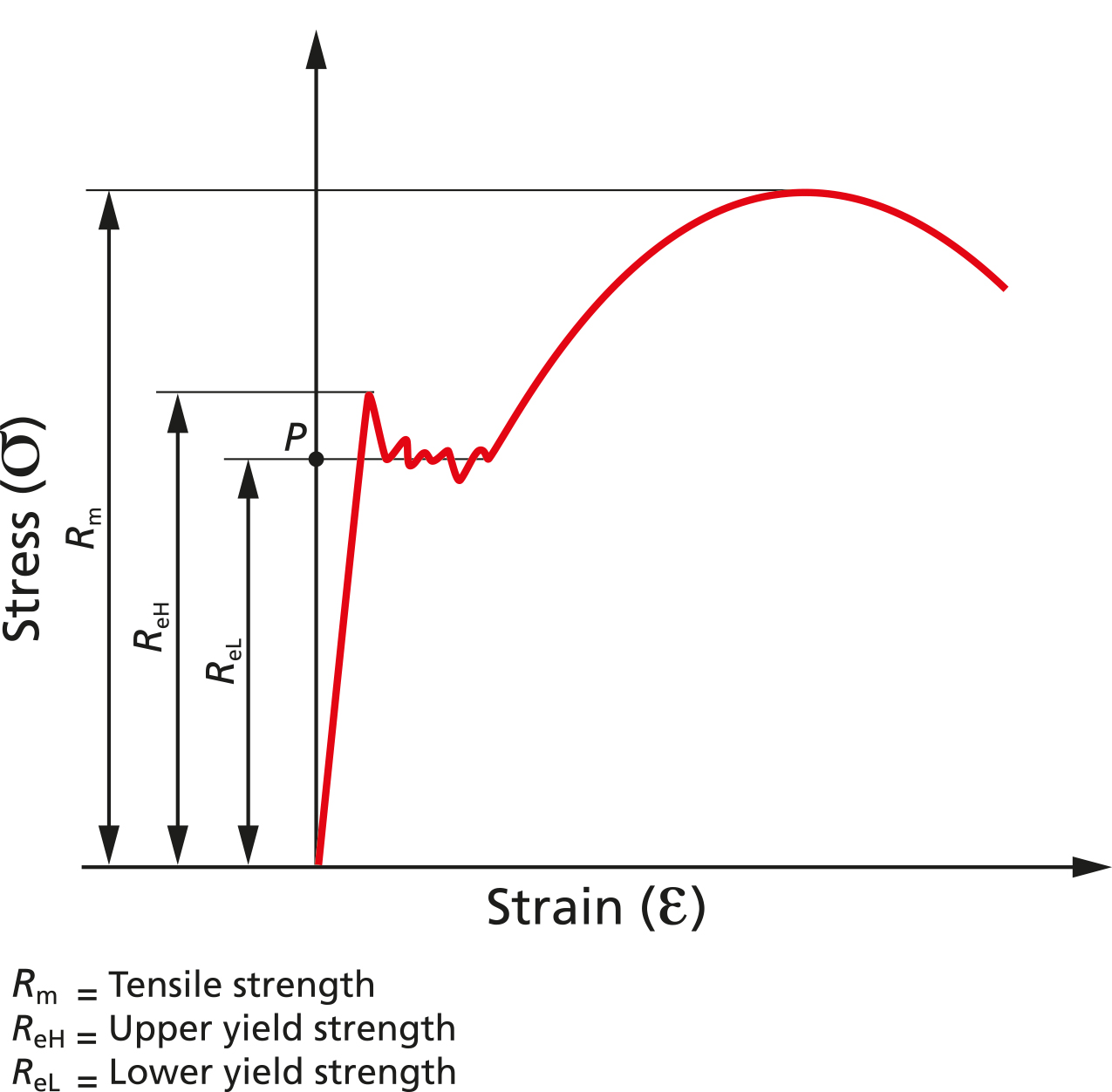
Here SMT Srl – the independent testing laboratory and mechanical workshop – focuses on yield strength and how there are different yield values that are required by different standards.
A tensile test allows an operator to obtain a variety of different values and among them the yield strength, the topic of this article. When a specimen is subjected to a tensile test up to a certain load, its behaviour is elastic. This means that if the load returns to zero, the specimen returns to its initial size without any deformation. In fact, in the first part of the traction curve the trend is linear and follows Hooke’s law:


This initial section (From O to P) in Figure One defines the plastic regime. By increasing the load the user will reach a value beyond which the specimen will no longer have an elastic behaviour but will begin to deform permanently, so if the load returns to zero the specimen will no longer have its initial size – this is when you enter the plastic regime.
The yield point is therefore the stress by which you switch from the elastic to the plastic regime. Theoretically this value coincides with the point where the tensile test curve stops being a straight line. However, this value is not always easily identifiable and for this reason it was conventionally decided to assume as yield the value that involves a plastic deformation of 0.2%, corresponding to ε = 0.002 and relative to the beginning of the regime of large deformations.
This value is marked with the symbol Rp0.2 in Figure One and can be calculated by drawing a parallel to the elastic section of the curve and passing it through the point ε = 0.002 of the abscissa –
the intercept between this line and the tensile test curve identifies the yield strength Rp0.2. The value of Rp0.2 is normally required in the case of quenched and tempered steels, as in the case of classes 8.8, 10.9, 12.9 of the EN ISO 898-1 standard or as in the case of grades B7 and B16 of the ASTM A193 standard and of grade L7 of the ASTM A320 standard. However, Rp0.2 is not the only yield value required by the standards.
In the case of low carbon steels there are two different yield values. As in Figure Two, these materials should begin to deform plastically starting from point P, but around the dislocations there are small interstitial atoms that interfere with their movement and for this reason the plastic deformation starts from ReH, called upper yield point.
Once this value has been reached, the dislocations begin to move and the deformation of the specimen can also occur under a stress lower than ReH. This ReL value is called the lower yield point. It should be emphasised that in the stretch from P to ReH the behaviour is elastic but does not follow Hooke’s law.
The standards provide for these two yield values. For example, the standard EN 10025-2 – hot rolled products of structural steels, requires the upper yield point, while the EN ISO 898-1 standard requires the lower yield point for classes 4.8, 5.8 and 6.8.

Will joined Fastener + Fixing Magazine in 2007 and over the last 12 years has experienced every facet of the fastener sector – interviewing key figures within the industry and visiting leading companies and exhibitions around the globe. Will manages the content strategy across all platforms and is the guardian for the high editorial standards that the brand is renowned.





